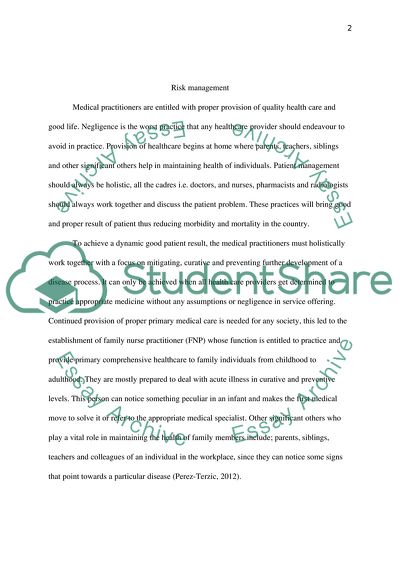Cite this document
(“Risk management case study analysis Coursework Example | Topics and Well Written Essays - 1750 words”, n.d.)
Risk management case study analysis Coursework Example | Topics and Well Written Essays - 1750 words. Retrieved from https://studentshare.org/nursing/1646884-risk-management-case-study-analysis
Risk management case study analysis Coursework Example | Topics and Well Written Essays - 1750 words. Retrieved from https://studentshare.org/nursing/1646884-risk-management-case-study-analysis
(Risk Management Case Study Analysis Coursework Example | Topics and Well Written Essays - 1750 Words)
Risk Management Case Study Analysis Coursework Example | Topics and Well Written Essays - 1750 Words. https://studentshare.org/nursing/1646884-risk-management-case-study-analysis.
Risk Management Case Study Analysis Coursework Example | Topics and Well Written Essays - 1750 Words. https://studentshare.org/nursing/1646884-risk-management-case-study-analysis.
“Risk Management Case Study Analysis Coursework Example | Topics and Well Written Essays - 1750 Words”, n.d. https://studentshare.org/nursing/1646884-risk-management-case-study-analysis.


